Installation view of 21st Century Fox at Tranen, Copenhagen (DK), 2021.
HD video and sound (22:04) on three 75” screens, textile prints “Dusk” & “Dawn” with three micro-controllers, nylon ropes and steel frames (245 x 375cm), circle-sofa with custom-made fabric (137 x 160 x 182 cm), one 50” screen showing “FOX GAN“ video (01:30), vintage taxidermy fox with two micro-controllers, vinyl-print “Hole” (100 x 80cm), two “Hole” foam cushions with custom-made fabric (42 x 42cm).
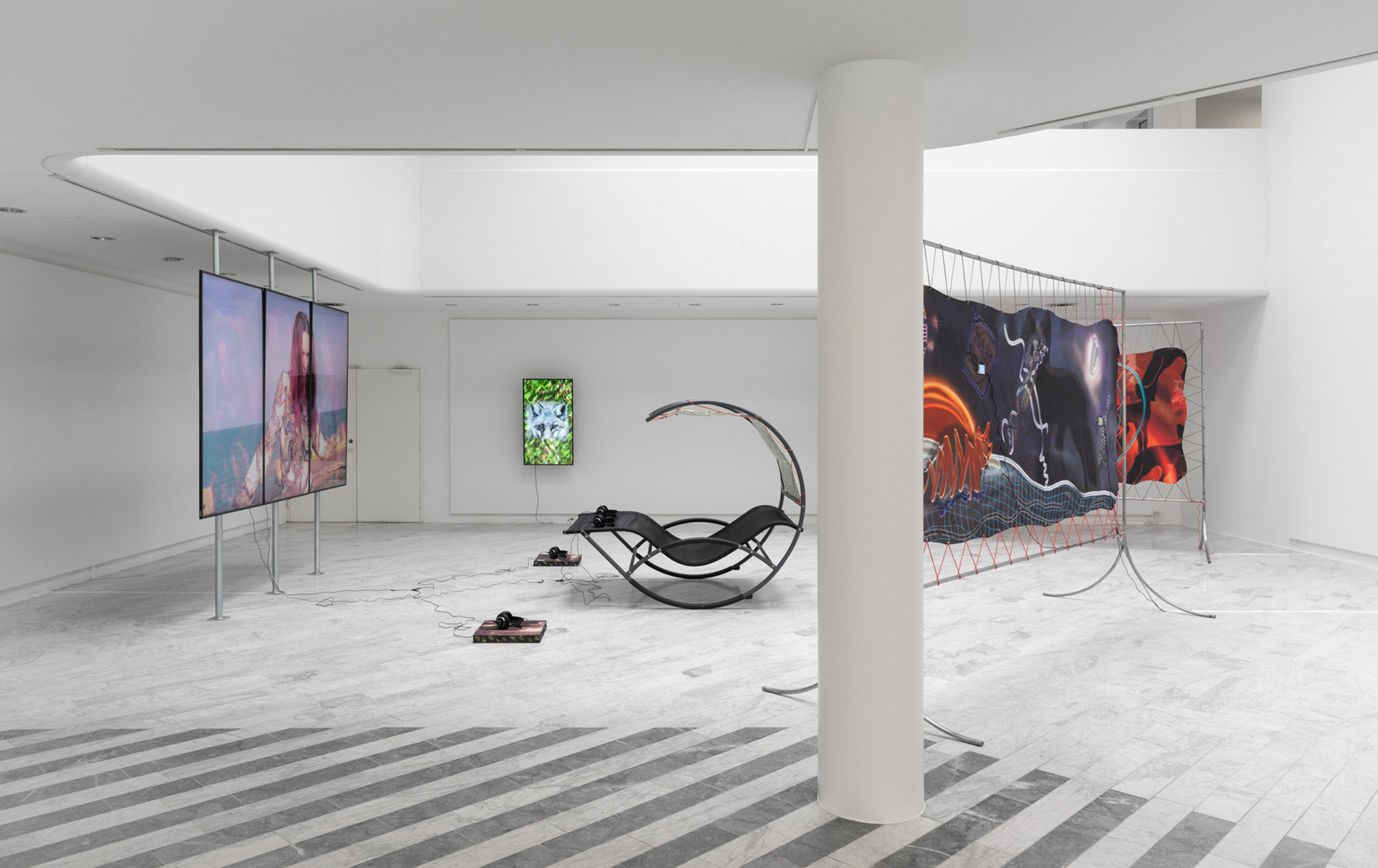
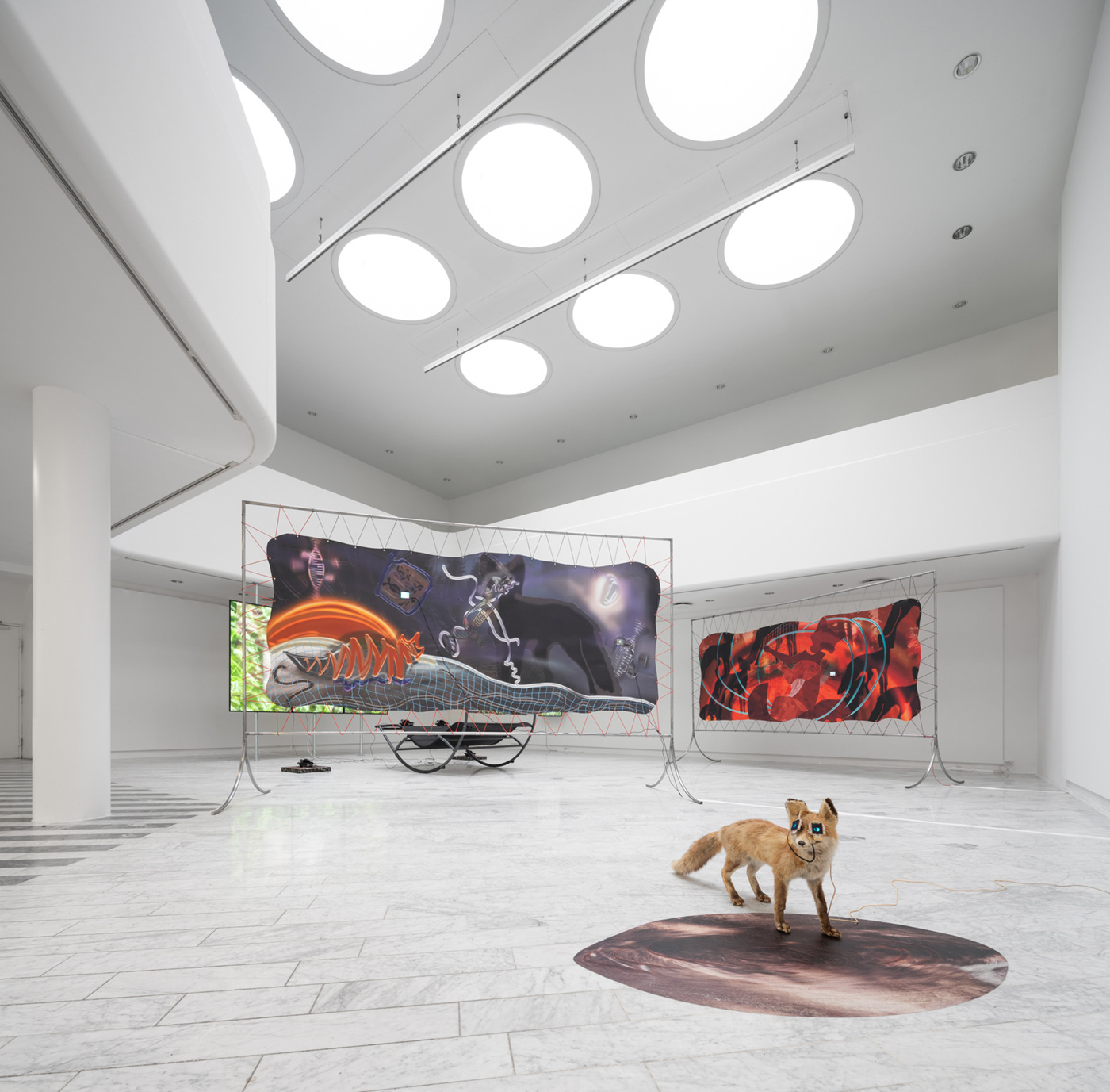
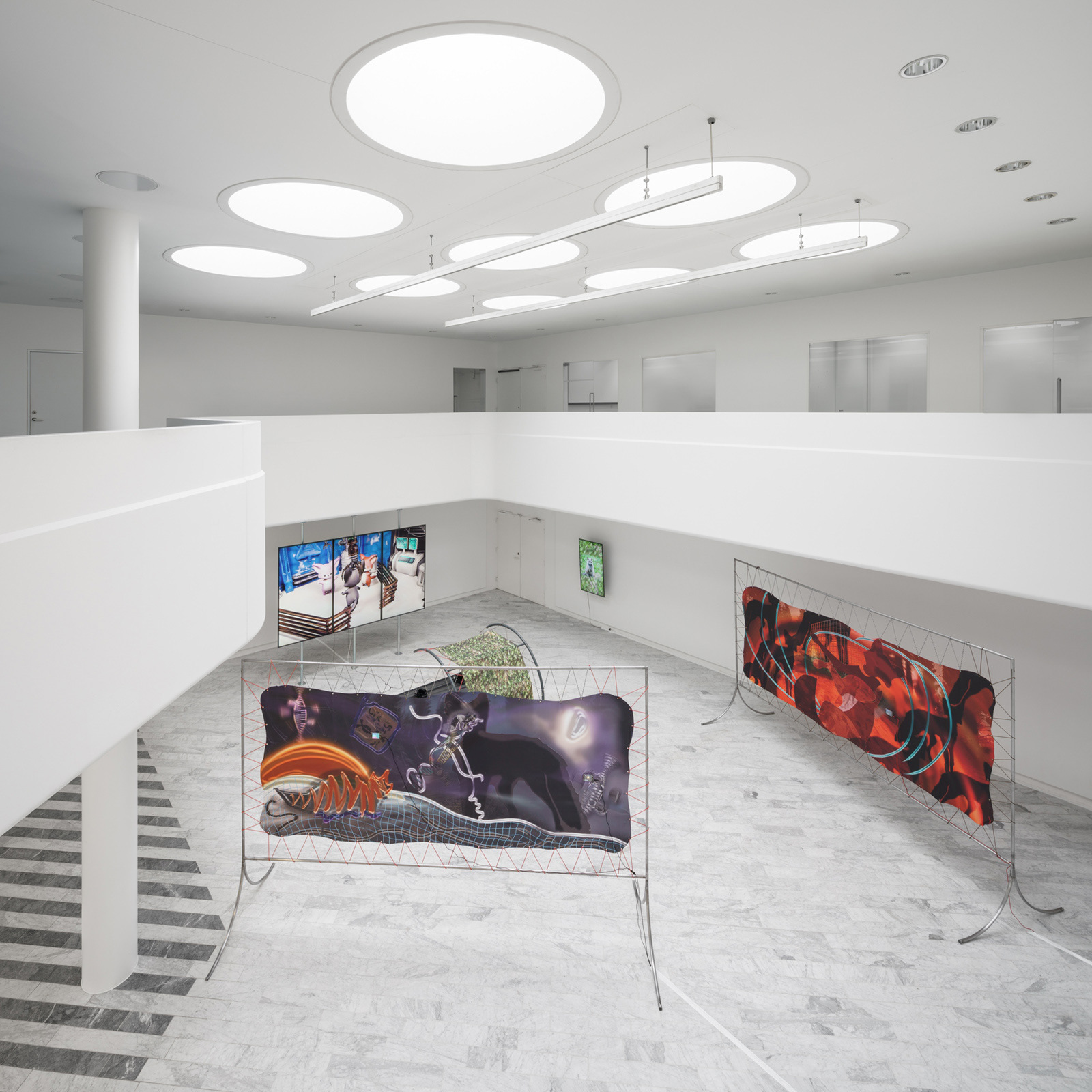

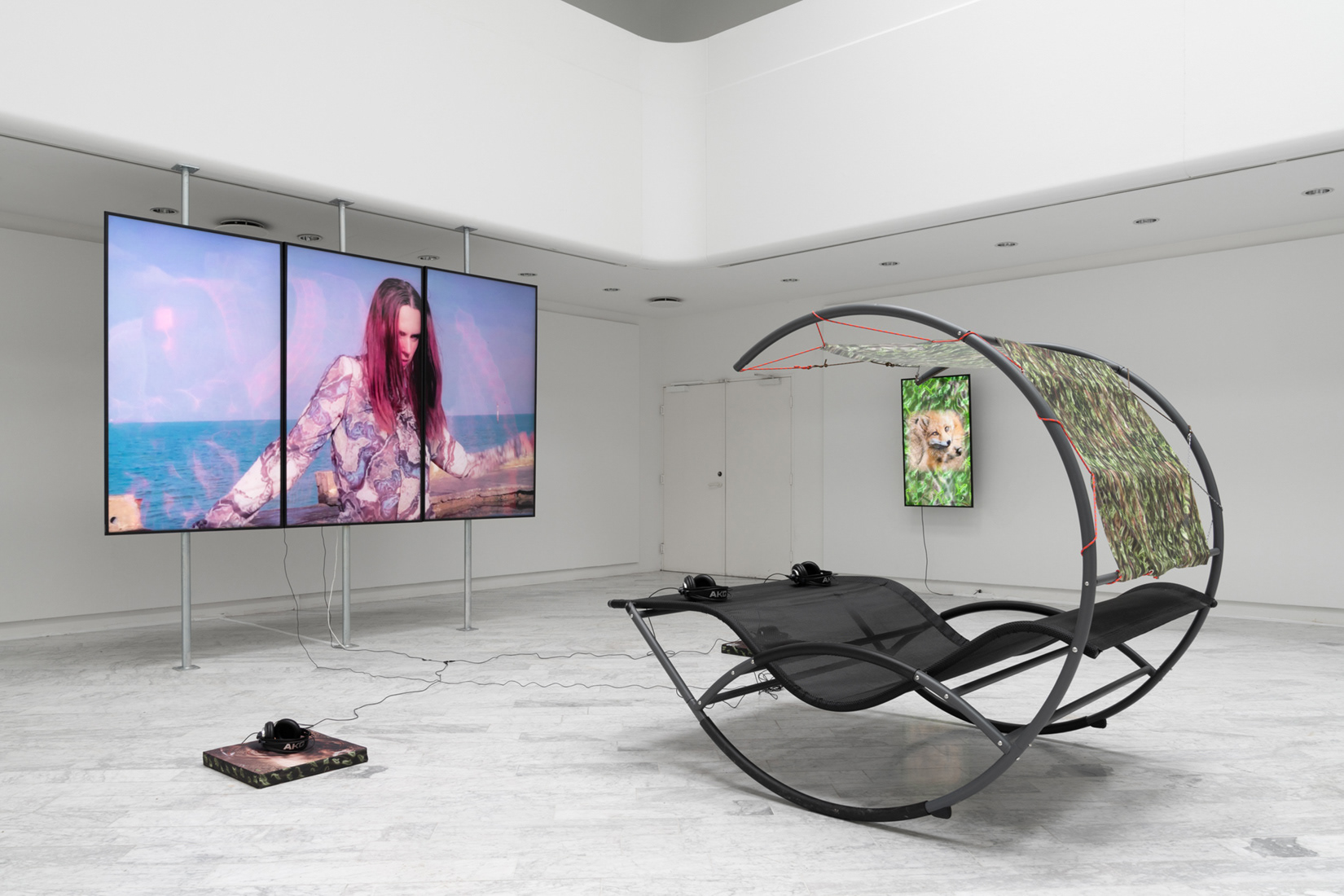


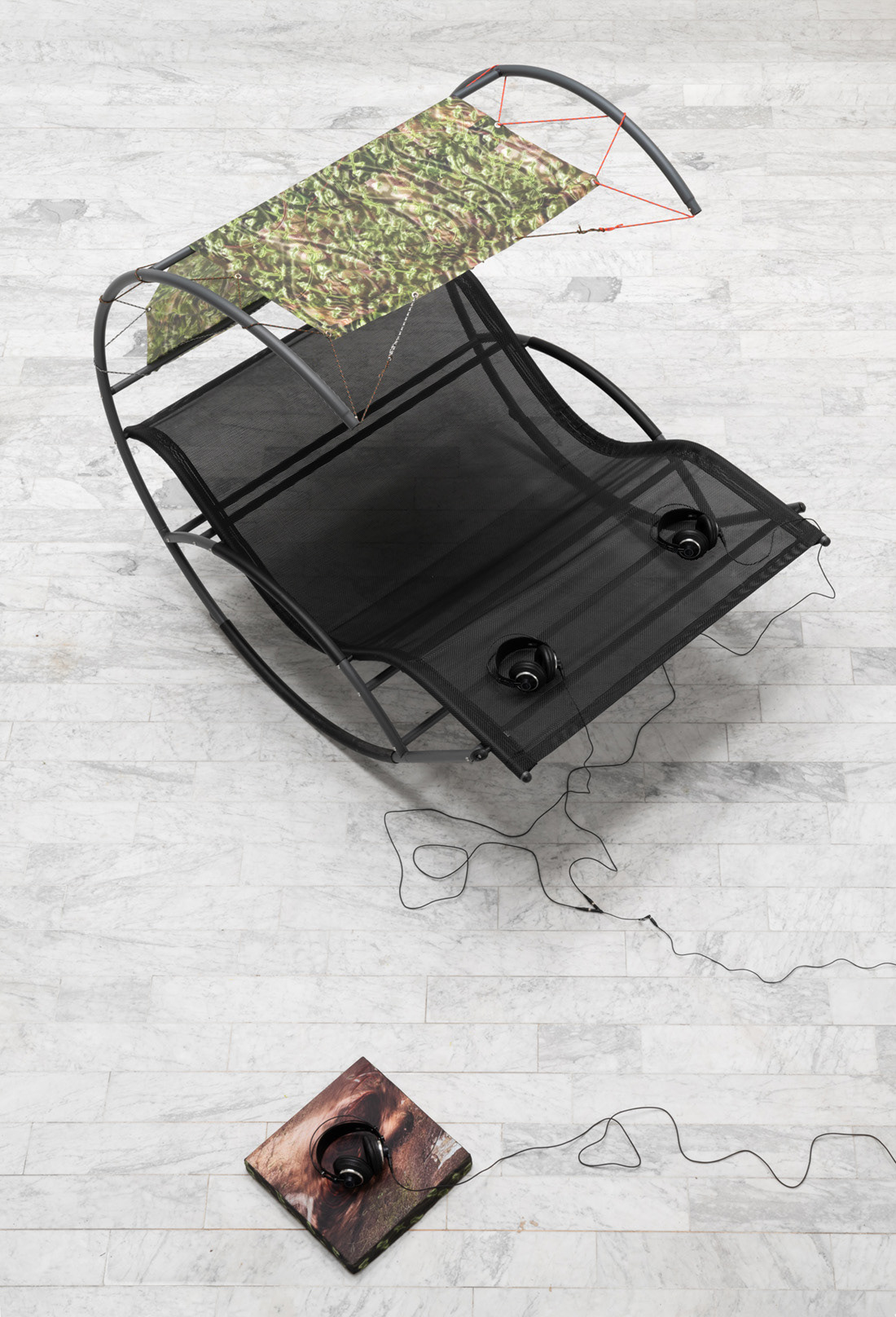
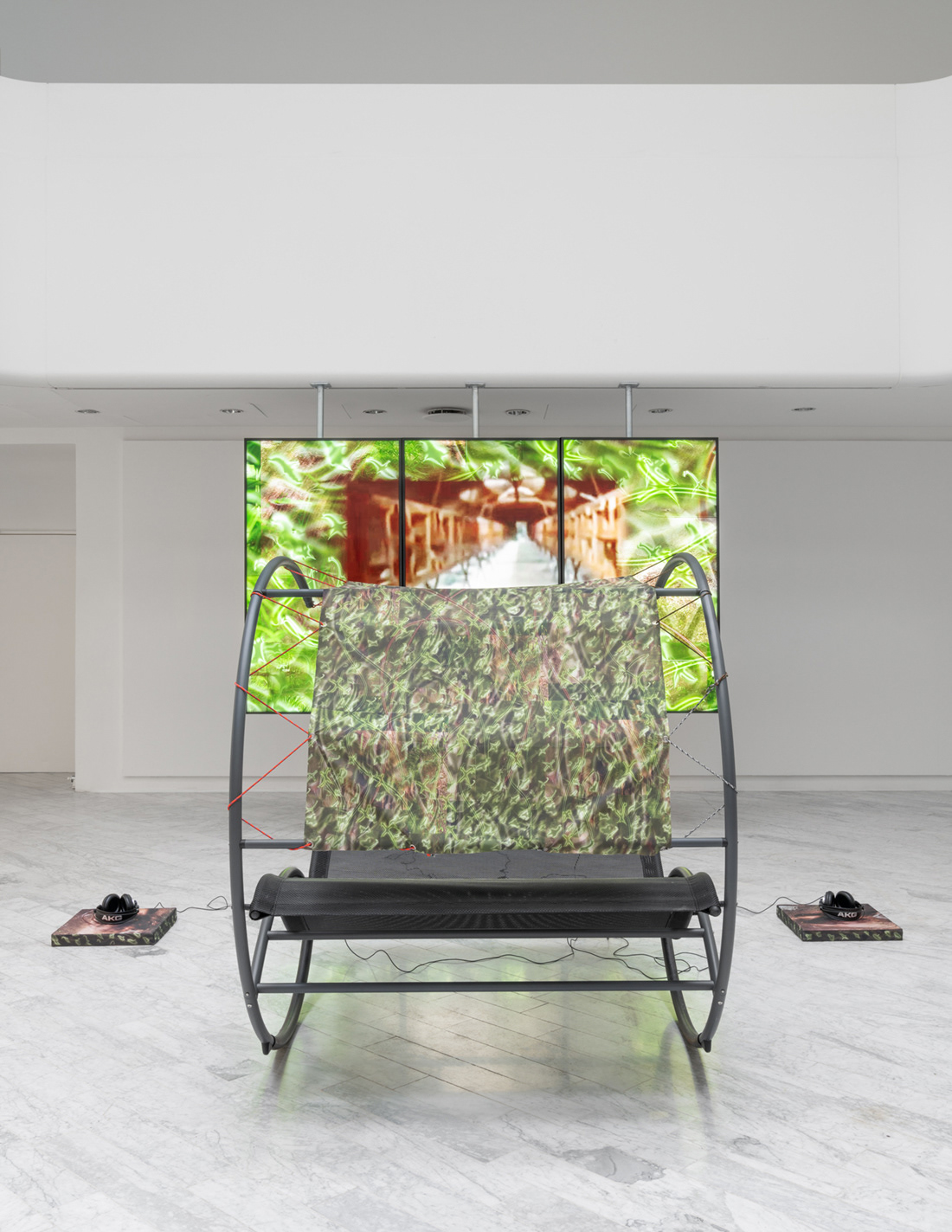
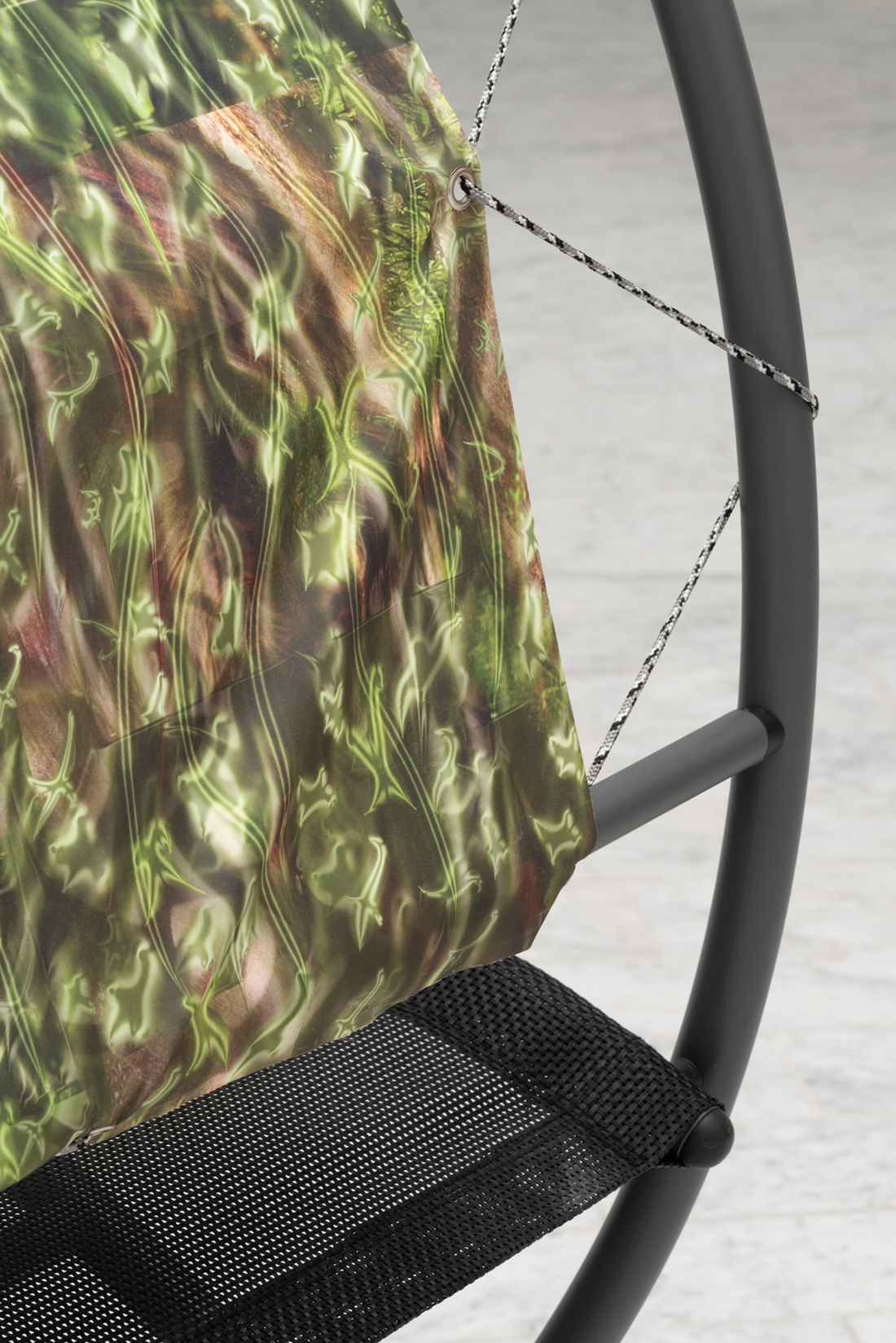
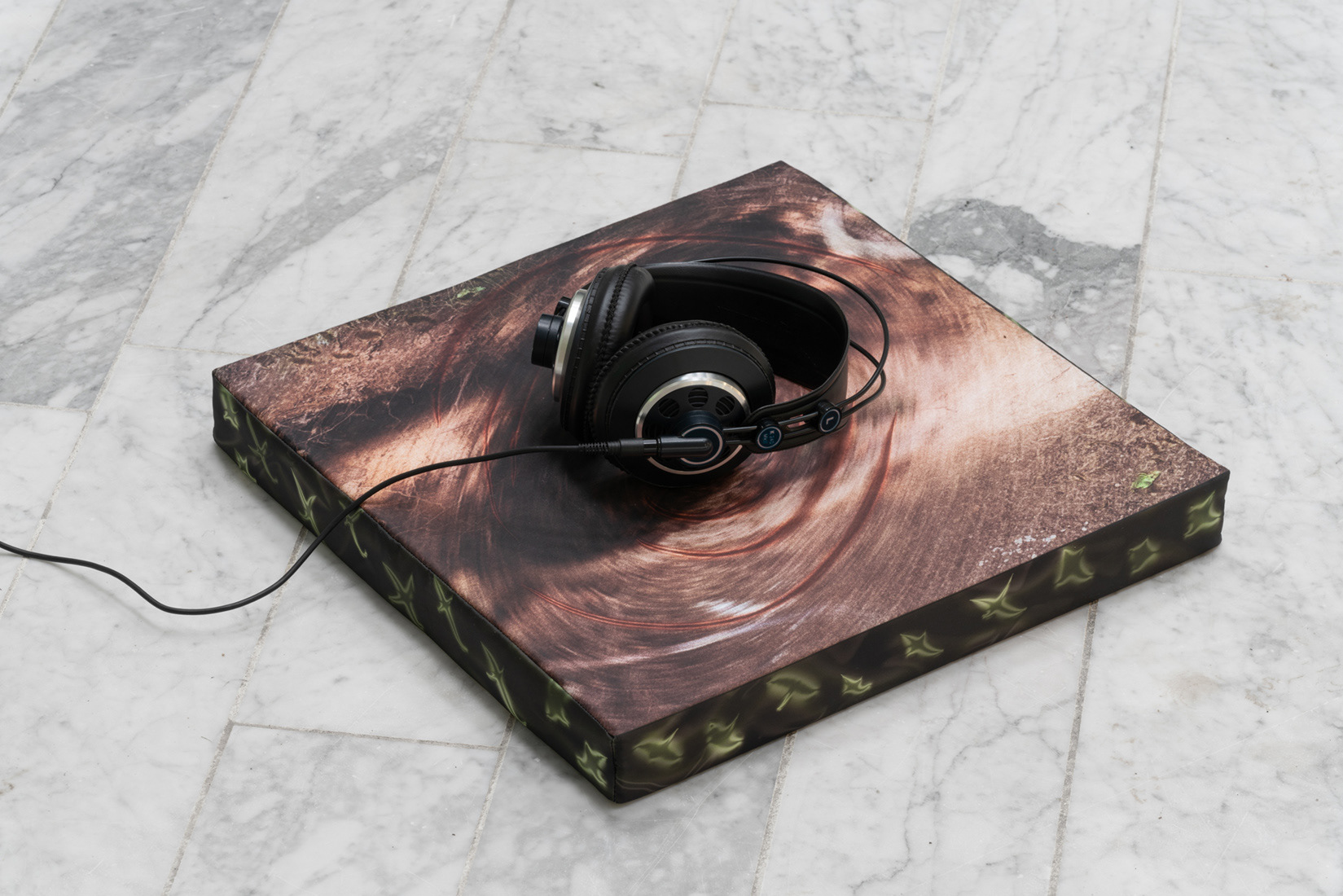
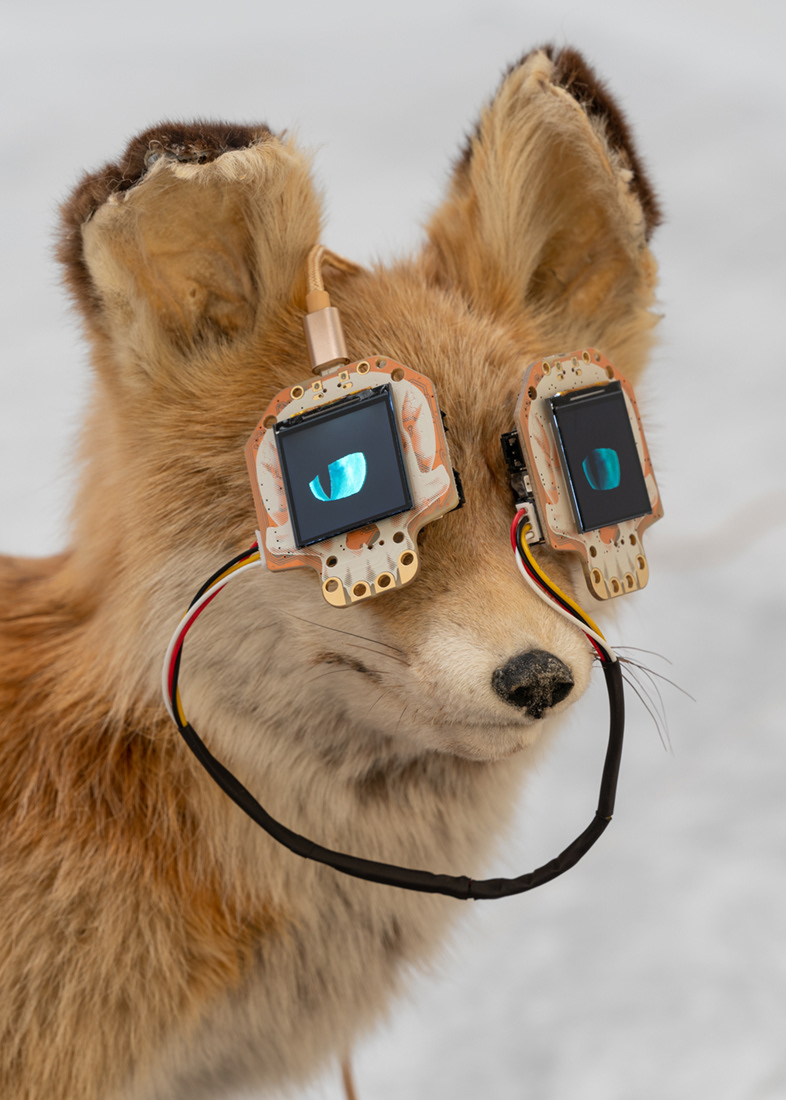


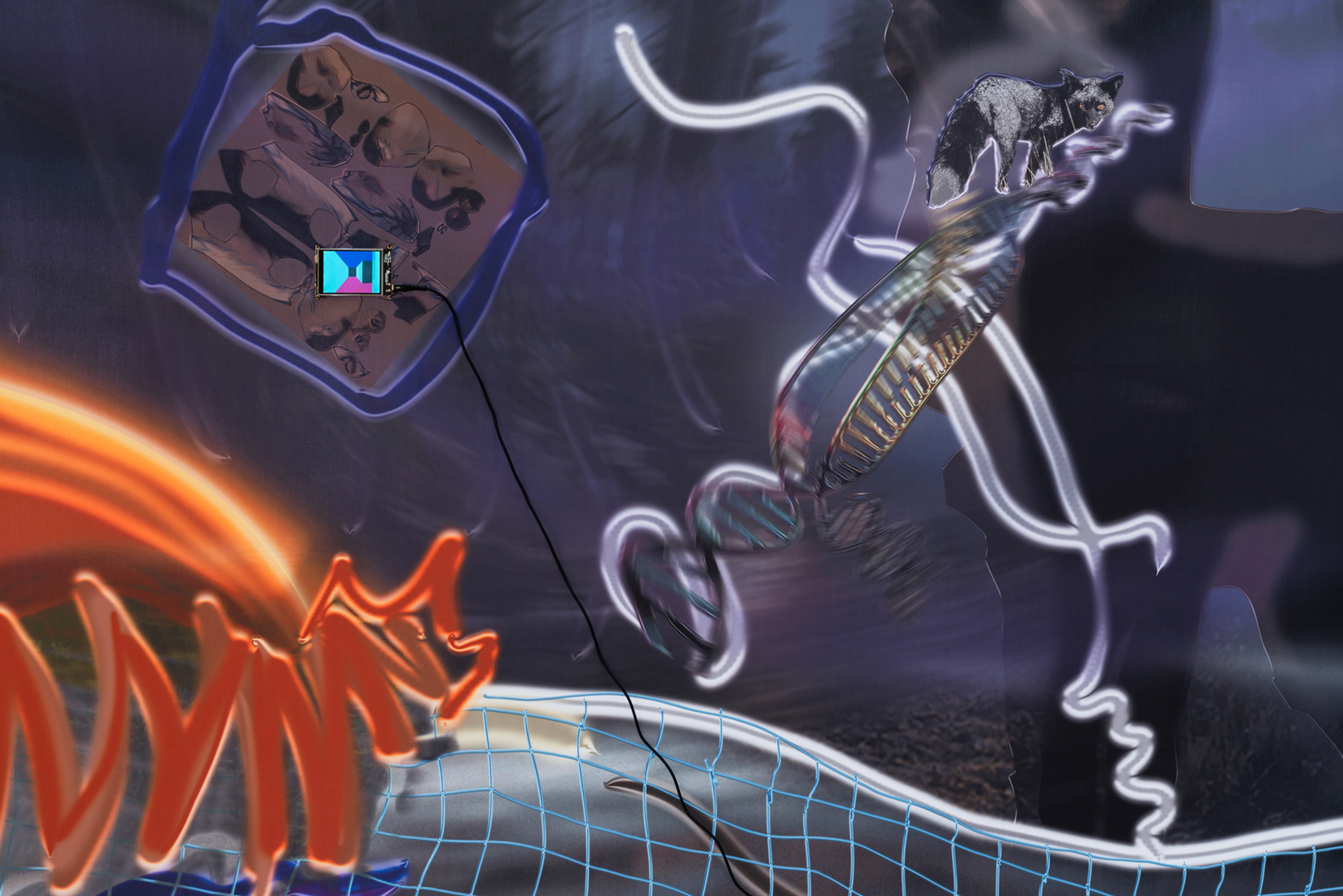
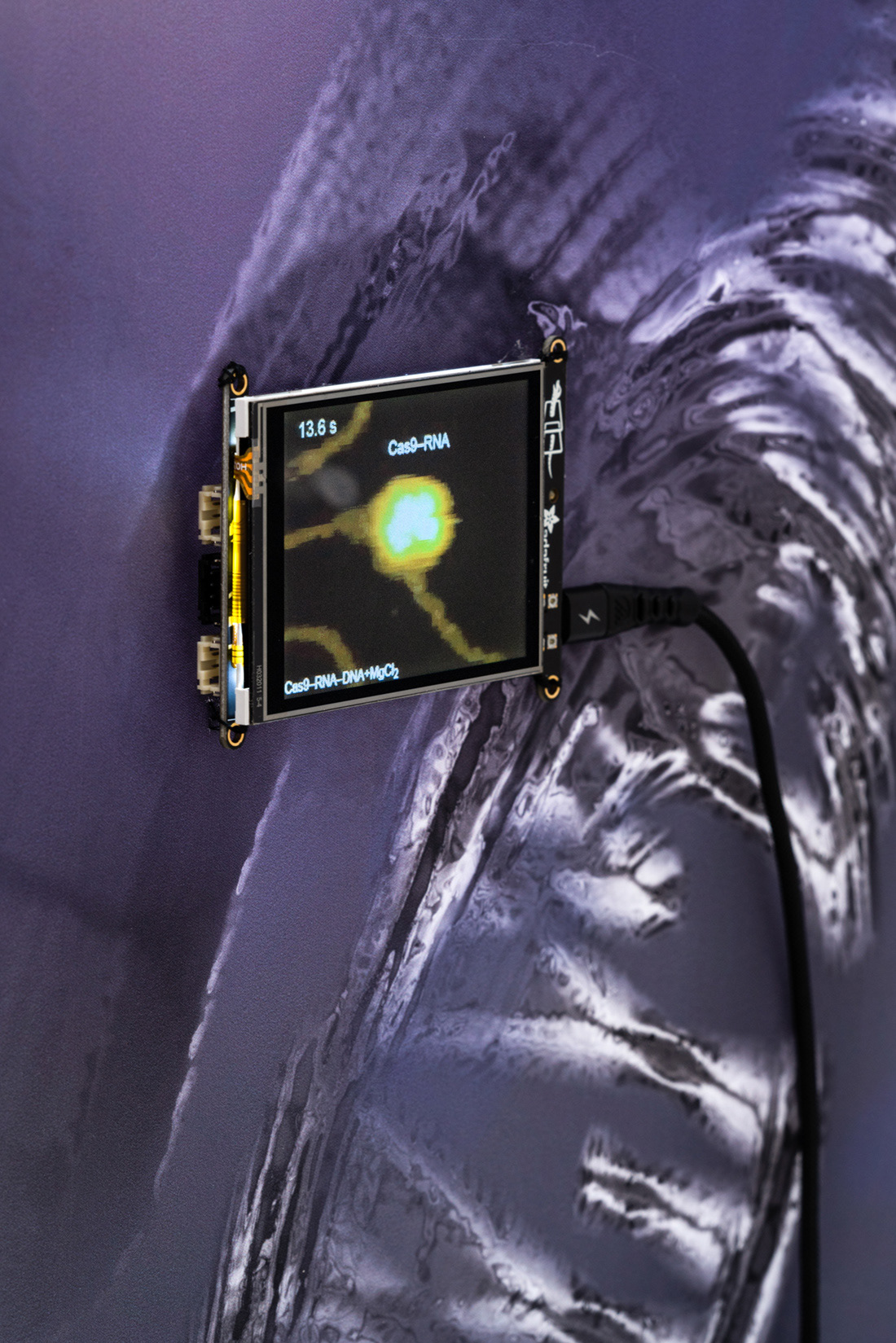


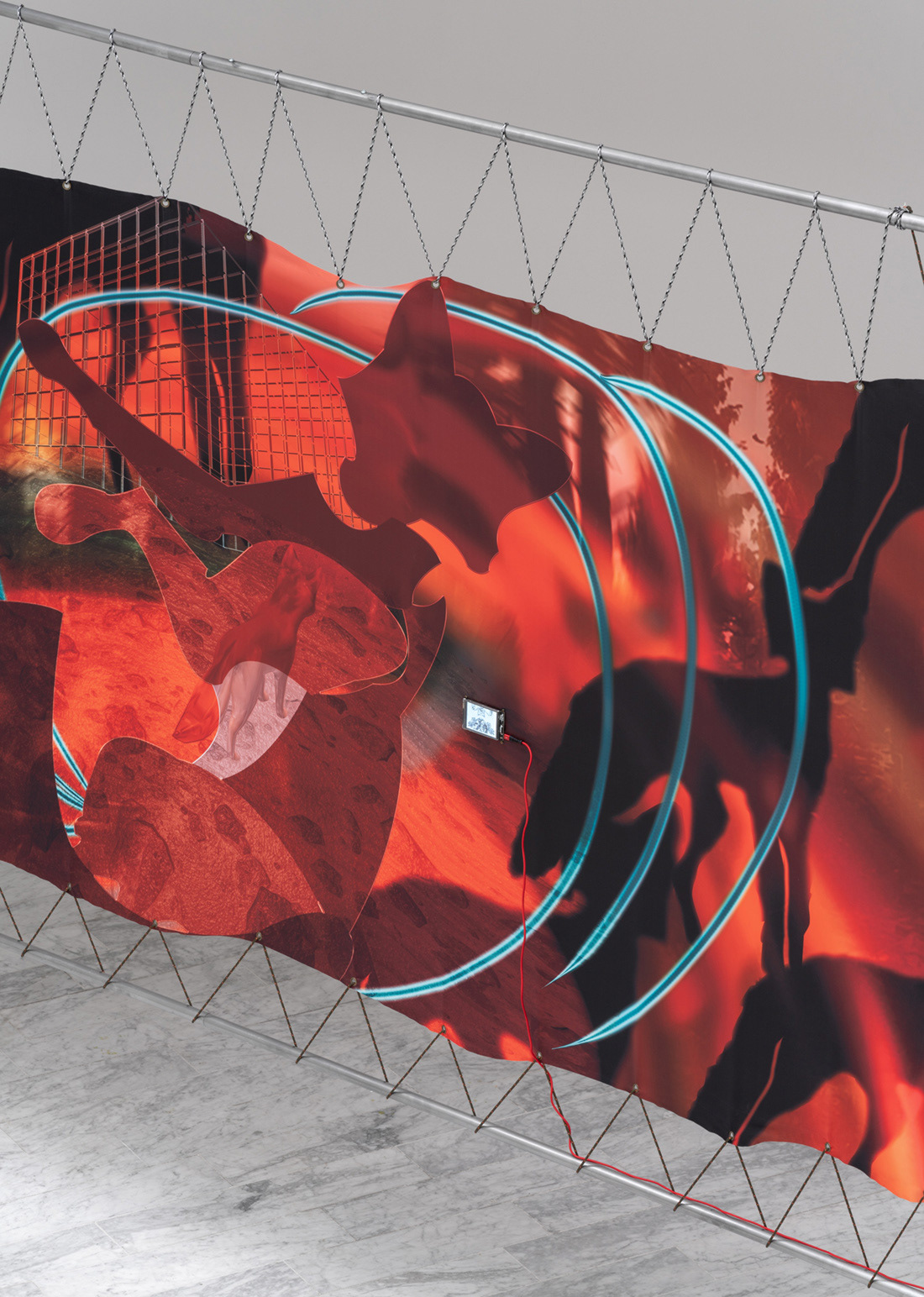

Exhibition Text:
In our rapidly changing world, more and more species are becoming extinct. A few of them are thriving, however. One of them is the fox, which we meet in Sofia Albina Novikoff Unger’s exhibition 21st Century Fox. We recognise this predator from fables and fairy tales as being particularly cunning. From biologists, we know it to be a highly adaptable animal. In the artist’s version, the fox is depicted as being just as changeable as the world itself. We are not talking about one fox, but about a diversity of foxes. There is the wild fox in its natural habitats, the urban fox, the tame fox, the domesticated fox raised for breeding and the genetically-modified fox. There is the fox that is hunted by riders on horseback with hounds in the UK, and the fox that is worshipped as a deity in China and Japan. There is the fox as we humans imagine and depict it, and the fox as it imagines and presents itself. Or at least there is in Novikoff Unger’s depiction of the fox, which is not content to be the protagonist, but also wants to be the author of its own narrative.
Foxes typically live with their young in burrows. They dig a network of underground tunnels, which lead to several foxholes. Additional exits make it easier for the foxes to escape in case of an intruder. It can be hard to determine where foxes will show up one moment – only to disappear the next. Just like humans – and together with them – they have spread across the globe, from Australia to the Arctic Circle. Their natural habitats are woodland, plains and fields, but they can adapt to almost any environment. Deforestation and humanity’s constant expansion of urban boundaries has led some foxes to expand their territory into cities – and others simply to remain where people have opted to settle. In 19th- and 20th-century Europe in particular, they have become ever more accustomed to life on the streets. In the UK, the fox is now the apex predator at the top of the food chain, threatened only by humans.
In the exhibition 21st Century Fox, this species is presented in a myriad of overlapping materials, media and narratives. It presents a view of the fox as a product of continuous evolution and as a ‘shapeshifter’ in Southeast Asian mythology. The first fox we encounter in Novikoff Unger’s exhibition is the red fox, Vulpes vulpes, at the entrance to Tranen. It has just stepped out of one of the foxholes in the marble floor. It is dead and stuffed, but a couple of screens in front of its eyes reanimate them. Its vertically split pupils endow this specialised hunter with another view of the world. The foxhole recalls the eye of a hurricane, a wormhole or Lewis Carroll’s rabbit hole. It is like a portal to another world – a different logic, in which our familiar laws of nature and common sense are distorted. Behind this are two large, outstretched digital textile prints. They recreate the time period from when the sun goes down to when it rises again: a time the fox predominantly spends hunting as people sleep. On the textiles, we see foxes dissected and analysed using the mapping software UV Mapping, climb up the steps of DNA strands, move in and out of various structures, multiply and fall through space and time.
Through the fine fabrics of a porch swing, a large video wall lights up. Here, Novikoff Unger presents the main work in the exhibition. The film blends documentary and animation, reportage and speculation, facts and fiction. The narrative begins in 1959 in Siberia, where the geneticist Dmitry Belyayev experiments with breeding tame foxes. While it took thousands of years to domesticate dogs, Belyayev and his team were able to domesticate the fox in just a few decades. No longer shy and aggressive, it has become accommodating and friendly towards people. Its features are softer, rounder and more pleasant. In a laboratory in the United States, this rate is further increasing. Novikoff Unger interviews geneticists, who are now using CRISPR gene editing to cut and paste into the DNA of organisms. Here, work is done on rewriting “the molecules of life any way we wish”. We follow recordings of the fox, which lives in ever greater contact, harmony and empathy with humans. As the story progresses, it becomes increasingly clear that the voiceover is a fox’s voice and not a human’s. More and more, the fox starts to resemble and behave like its master. Scientists are developing the fox to a point where it can control its own development. Finally, it locks itself inside the laboratory and locks the geneticists out. Novikoff Unger’s documentary about the fox is also yet another fable about the fox and another animal – in this case a human.
A smaller screen in 21st Century Fox presents a short epilogue. Here, a new fox takes shape using the image generating technology StyleGAN, where you can choose the input, but not the output.
21st Century Fox is a part of Tranen’s programme of extemporary art. The focus is on contemporary art that is not primarily focused on our contemporary condition. When everything from climate to technology evolves at ever greater pace, the present becomes ephemeral and intangible. The present starts to shrink. Meanwhile, our knowledge of the past increases. Speculations about the future abound. As part of this development, a lot of art is no longer contemporary — which literally means ‘with time.’ Instead, art is rather ‘extemporary, i.e. ‘out of time’.
Text by Toke Nielsen.
Photographs by David Stjernholm.
Installation view of works from 21st Century Fox at "Supersublime", Giant Gallery, Bournemouth (UK), 2023.
“Dusk”, textile print with two micro-controllers, nylon ropes and steel frame (245 x 375cm)
"FOX GAN", 50” screen, video loop (01:30)
"Shifter", vintage taxidermy fox with two micro-controllers, vinyl-print “Hole” (100 x 80cm)
Photos by Corey Bartle-Sanderson
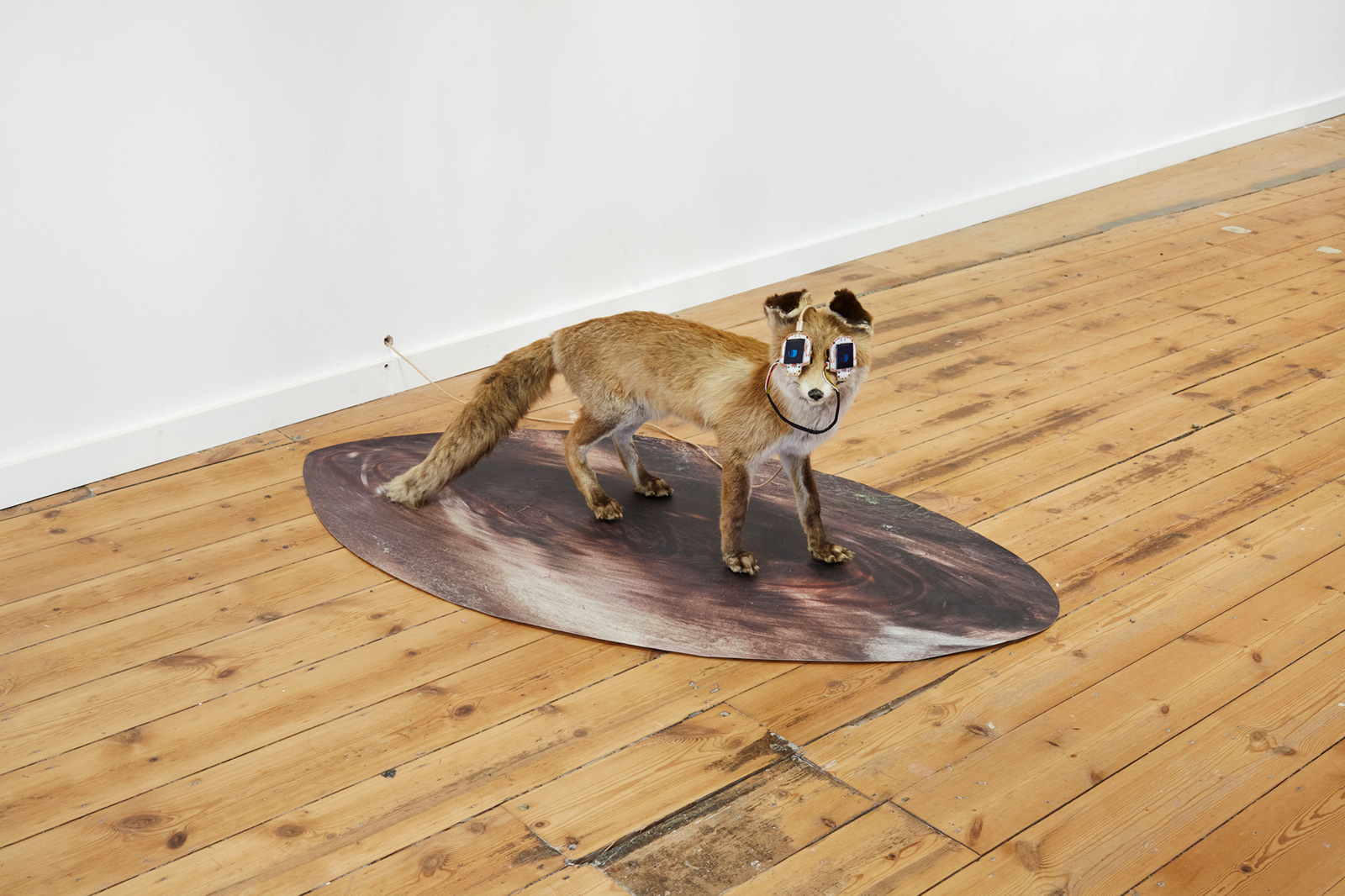
Shifter

Shifter, FOX GAN
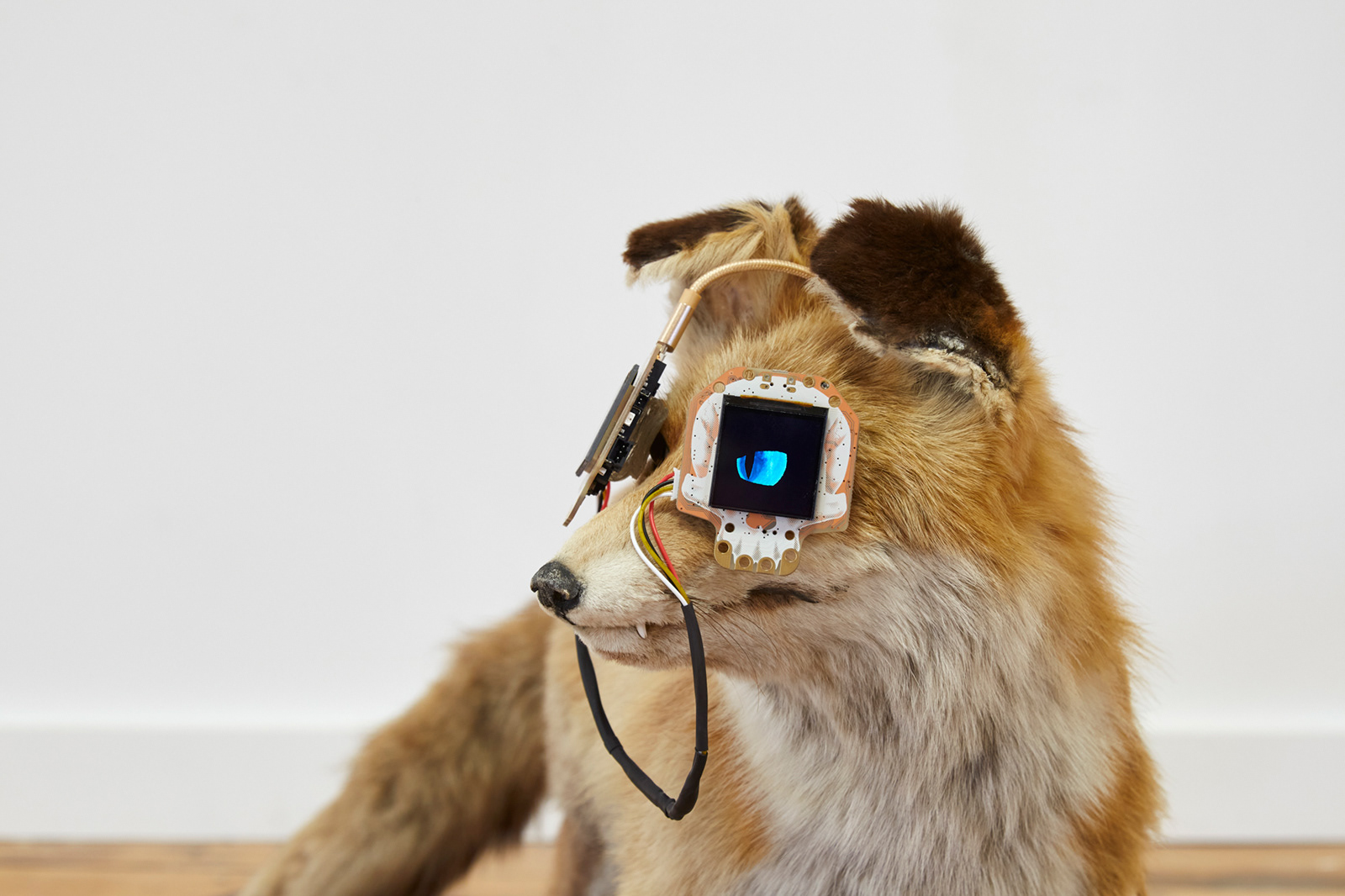
Shifter, close-up
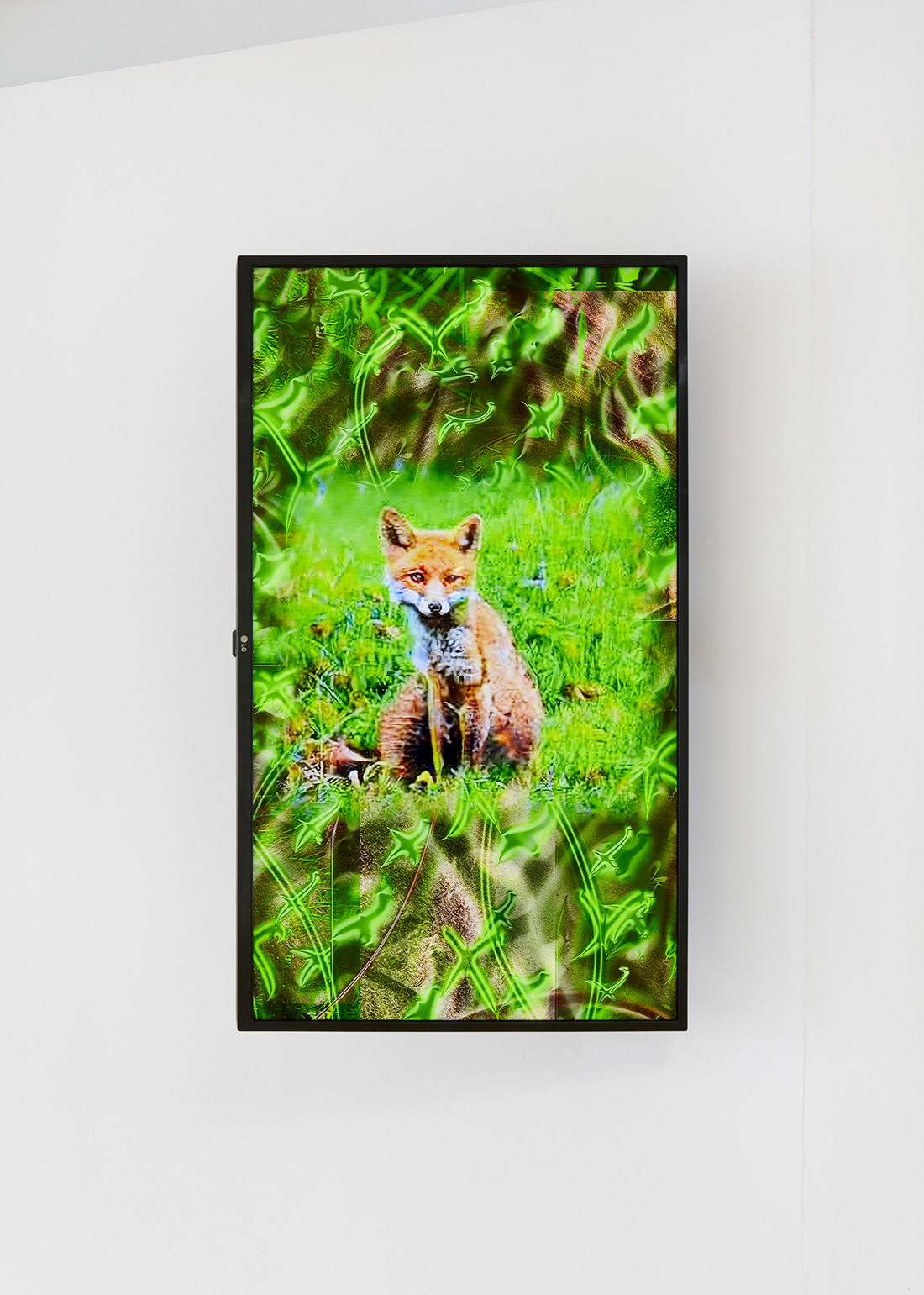
FOX GAN
